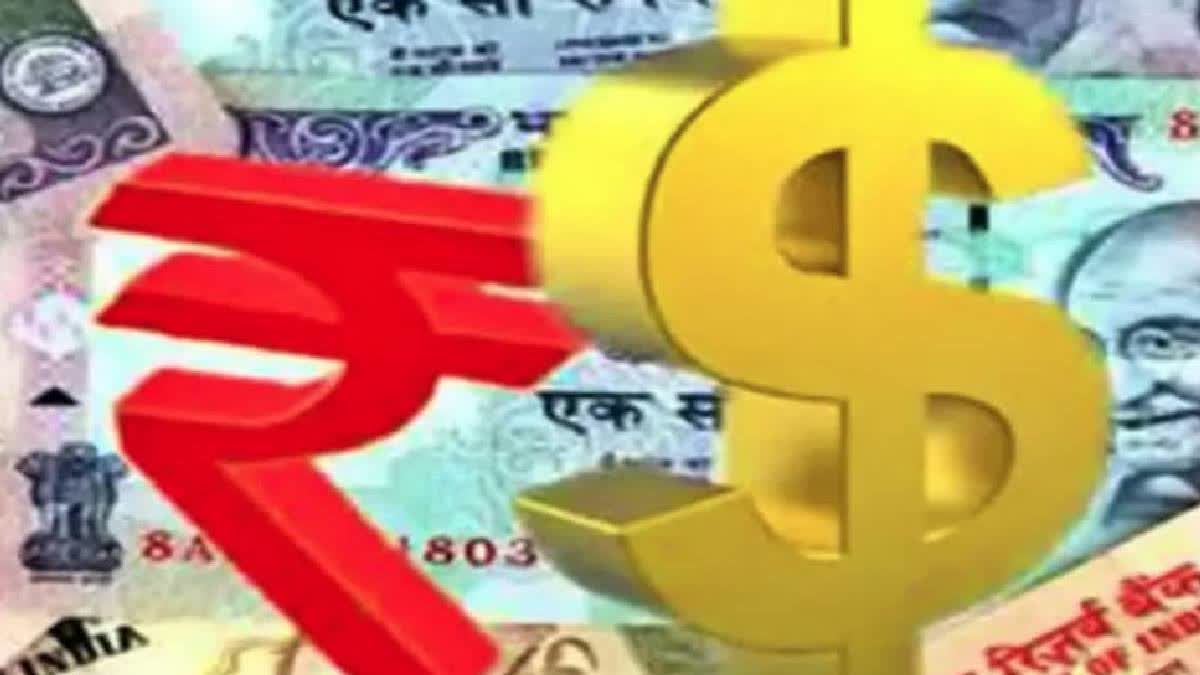Hyderabad:In a world where the United States dollar has reigned supreme as the undisputed global currency, recent sanctions imposed by the United States on various nations have sparked concerns about the dollar's ongoing dominance. The international community is increasingly wary of relying on the dollar, and India, too, is contemplating a move away from it. The critical question remains: Can India's ongoing efforts to internationalise the rupee succeed and reduce its reliance on the dollar's supremacy?
For decades, international trade payments have been overwhelmingly conducted in US dollars, with roughly 90 percent of foreign exchange transactions being dollar-denominated. Furthermore, a substantial 60 percent of foreign exchange reserves held by countries worldwide are denominated in dollars. When the global demand for dollars’ surges, it leads to an appreciating exchange rate. This appreciation adversely affects the trade balances and domestic exchange reserves of nations, including India. Consequently, countries find themselves paying higher bills in their local currencies and witnessing a gradual depletion of their reserves. It is for this reason that many countries are exploring alternative means to reduce their dependence on the dollar's overwhelming presence in international trade.
Trade in Local Currencies
The trend of using local currencies in international payments has seen steady growth between 2013 and 2019, leading to only marginal growth in the prevalence of the US dollar from 2013 to 2022. Notably, this shift towards non-dollar currencies in trade is more pronounced in developing countries. An exemplary case is the increased use of the yuan and ruble for trade between China and Russia, where around 70 percent of their trade is now conducted in their local currencies. During a recent visit by Prime Minister Modi to the UAE, an agreement was reached to facilitate trade between the two nations in their respective local currencies. Sri Lanka has also expressed its willingness to adopt a similar approach, with Indonesia poised to follow suit.
In tandem with this development, the local currency bond market is experiencing rapid expansion. It's crucial to note that the growing use of local currencies and local currency bonds does not necessarily imply a diminished role or value for the US dollar.
India, in its pursuit of fostering foreign trade and transactions in rupees, established the first International Financial Services Center in 2015 at 'Gift City' in Gujarat. India has also offered the opportunity to open special bank accounts to facilitate trade with Russia in rupees, a proposal initially introduced by the Reserve Bank in 2013. This strategic arrangement aims to lower transaction costs for both nations, enhance price transparency, save time, and simplify the trade process. Additionally, it streamlines the remittance process from overseas Indians into the country. The recently unveiled foreign trade policy of 2023 has also prioritized trade conducted in rupees, signaling India's commitment to peg its currency to international currencies and reduce the impact of adverse fluctuations in the value of the dollar on its currency.
A Vision for the Rupee
To achieve the internationalization of the rupee, all international trade and transactions should be conducted in rupees. The global surplus should be in rupees and rupee-denominated government bonds, which are currently predominantly denominated in dollars. For internationalization to continue successfully, India's foreign trade must first balance with other countries. While a trade surplus is advantageous, it's crucial to avoid a trade deficit.
